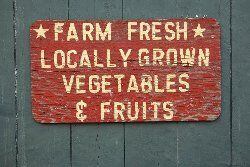The U.S. Department of Agriculture (USDA), which supports and tracks the local food infrastructure in the United States, recently estimated annual sales of local food and beverage products at over $11 billion. (By comparison, organic food sales reached $35.9 billion in 2014, up 11% over the previous year.)
While more than 25% of U.S. consumers are buying more organic, local, natural and non-GMO products than a year ago, both organic and non-organic users say they’re buying more local products this year, according to The Hartman Group. What’s more, some 62% of consumers say they are “trying to understand where their products are made” and 56% percent say that they “try to buy products made in their region.”
Although organic and local share certain key characteristics, consumers typically start purchasing organics following specific life events (such as becoming a parent, reacting to a health condition or entering the work force) that skew to a goal of health and wellness and higher overall quality food experiences, Laurie Demeritt, CEO of The Hartman Group, told FoodNavigator-USA.

“Local, on the other hand, has a much broader spectrum of appeals for consumers that include those relating to freshness, economics, taste—and, in some cases, nutrition—and transparency,” she said.
The trust factor
Local’s broad appeal stems largely from its ability to connect the consumer to the producer, speaking to a growing desire for transparency and reciprocal relationships with brands—something more consumers feel is missing with bigger companies, according to The Hartman Group’s 2015 Transparency Report.
Consumers tend to believe that local producers and small farmers have more integrity and are deeply invested in their products’ quality, said Demeritt. Purchasing locally produced foods thus provides many of them with a sense of contributing to and supporting small farmers and their community.

Local is also seen to minimize carbon footrprints by requiring less fuel for transport—not to mention the perceived positive impact on taste and even nutrition for food that has less far to go to reach the shelf.
The distinction also means more than organic to deeply engaged consumers who might believe that many small farmers cannot afford certification but nonetheless produce high-quality foods with integrity, Demeritt added.
Local is a fluid concept to consumers
The term’s appeal seems to reach across demographics as well, she added. “This in part has to do with widespread availability and distribution in terms of farmer's markets, CSAs, specialty markets and now conventional food retailers and home delivery services—all of which offer local, but also because there are a diversity of definitions that apply to local,” she said.
Indeed, local is a very fluid concept to consumers—meaning product doesn’t necessarily have to have been produced 100 miles away to earn the designation—regionally produced products are just as favorably viewed, she added.
Consumers want to know the narrative behind local products
Retailers that link to local tend to be praised for taking a stand on issues and demonstrating alignment with consumers’ values, including local small producers, not carrying GMOs and not stocking unethical brands, and being transparent about ingredients on prepared foods, Demeritt said. The biggest opportunity lies in the ability of conventional supermarkets and food retailers to further refine the process of signaling when local products are in their stores.
“We know of large retailers who may source local fruits and vegetables from within a region, but are precluded from telling ‘the local story’ from the producer perspective because of centralized distribution warehouses, which combine similar local products, for example fresh corn or apples,” she said.
“Consumers want to know the narrative behind local products—so the most room for growth would seem to lie in telling that story to consumers as carefully as possible.”
